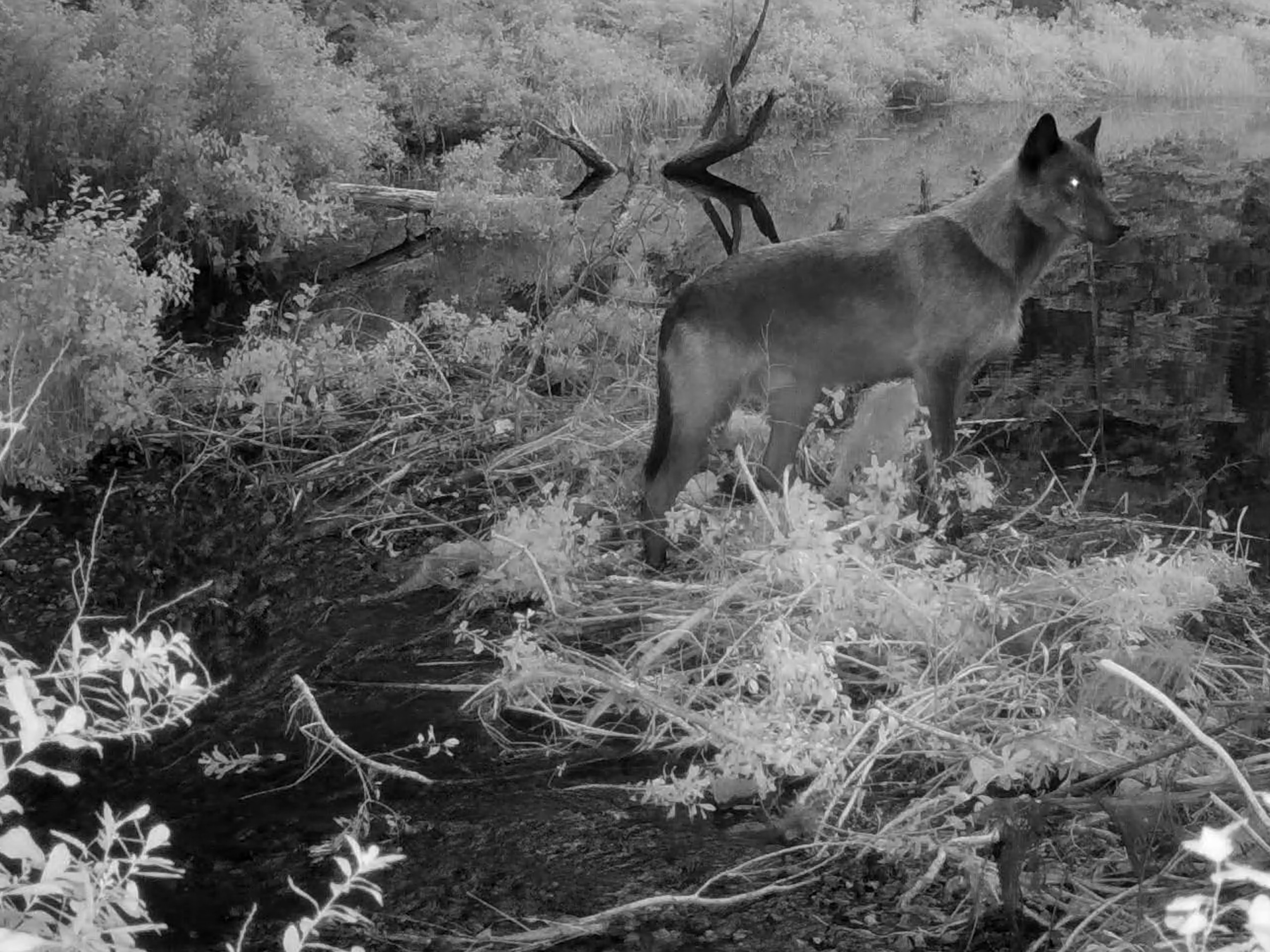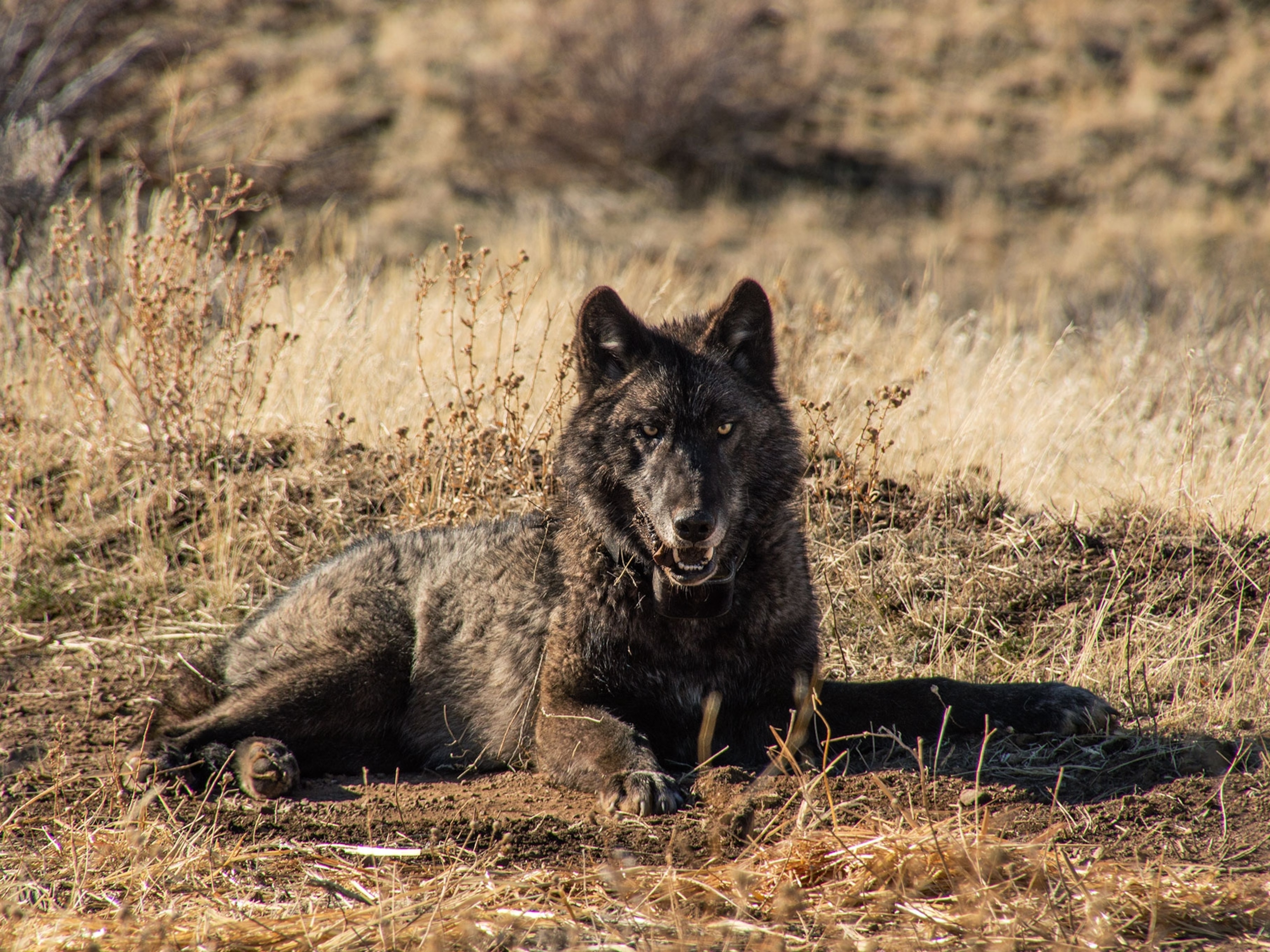
Coyote-Wolf Hybrids Have Spread Across U.S. East
Predators bred with Great Lakes wolves, then moved south, DNA shows.
Hybrid offspring of coyotes and wolves have spread south along the eastern seaboard, a new DNA study confirms.
Scientists already knew that some coyotes, which have been gradually expanding their range eastward, mated with wolves in the Great Lakes (map) region. The pairings created viable hybrid offspring—identified by their DNA and skulls—that have been found in mid-Atlantic states such as New York and Pennsylvania.
Now, new DNA analysis of coyote poop shows for the first time that some coyotes in the state of Virginia are also part wolf. Scientists think these animals are coyote-wolf hybrids that traveled south from New England along the Appalachian Mountains.
The study also identified another coyote migration route moving through the southern states.
"You have a situation where you have these two waves of coyotes coming into the mid-Atlantic, a terminus for coyote colonization," said study leader Christine Bozarth, a former research fellow at the Center for Conservation and Evolutionary Genetics at the National Zoo in Washington, D.C.
Northern Virginia in particular seems to be a convergence point for coyote migrations, Bozarth said—and the animals' numbers are increasing there, especially in suburban areas where food is more plentiful.
(See "Coyotes Now at Home in Eastern U.S.")
Versatile Coyote Already Widespread
Coyotes are originally residents of middle America, particularly between the Rocky Mountains and the Mississippi River, as well as parts of Canada and Mexico.
By the end of the 20th century, the versatile animal—which can eat almost anything, from shoe leather to fruit—had spread to nearly every corner of the U.S., even New York City.
The coyote is "one of the animals that will be left at the end, like the cockroaches, raccoons, and rabbits," Bozarth said.
For the new study, Bozarth and colleagues collected coyote scat samples in northern Virginia and extracted DNA. The team then compared the coyote DNA with that of representatives of every canid species found in eastern North America. (Get a genetics overview.)
The study, published October 17 in the Journal of Mammalogy, found evidence that Virginia coyotes mated with Great Lakes wolves but not with the rare red wolf, which is hanging on in just a few isolated spots in the U.S. South.
That's "good news for the red wolf," whose survival is already threatened by inbreeding, which reduces the species' genetic diversity, Bozarth noted.
Hybrid Coyotes Taking Down Deer?
For now, it's impossible to say how "wolfy" the newly identified coyote-wolf hybrids really are, Bozarth added—just that "at some point down the line, a coyote mated with a Great Lakes wolf-even generations ago."
Scientists have not yet studied the behaviors of the Virginian hybrids to see if they're killing bigger wildlife or otherwise changing the ecosystem, Bozarth added.
But other East Coast hybrids seen alive or identified by their remains are noticeably larger, with more wolf-like skulls, jaws, and teeth, Bozarth noted. (See pictures of new hybrid species appearing in the warming Arctic.)
Given this, coyote-wolf hybrids "should be able to do things like take down deer, which a little, scrappy Great Plains wily coyote would not be able to do on its own," Bozarth said.
Indeed, the research highights "just how successful and adapted these hybrids are to the eastern forests," said Roland Kays, curator of mammals at the New York State Museum in Albany.
For instance, Kays's research on the previously known eastern hybrids has shown that a third of their diet is deer—a much higher proportion than in western states.
Coyotes in Mid-Atlantic "Here to Stay"
Jonathan Way, a wildlife biologist and head of the Massachusetts-based education group Eastern Coyote Research, called the new paper "timely."
Coyotes coming from the west are moving not only through the Great Lakes but also south of the region, through Ohio. But until now, it was unknown how that southern route of colonization was influencing coyotes in the mid-Atlantic region, Way said by email.
According to Way, these two fronts of coyote expansion have probably made the Virginia animals "hybrids of a hybrid."
That's because the Virginia hybrids are most likely a combination of northeastern coyote-wolf hybrids, which are slightly bigger and more wolf-like, and nonhybrid coyotes coming through Ohio.
"The results of the paper are clear and important, and confirm that mid-Atlantic coyotes have DNA from [Northeast] animals ... and western coyotes," Way said.
Whatever their exact genetic makeup, one thing is clear, study author Bozarth emphasized: Coyotes and coyote-wolf hybrids in the mid-Atlantic are "absolutely established—they're here to stay."





